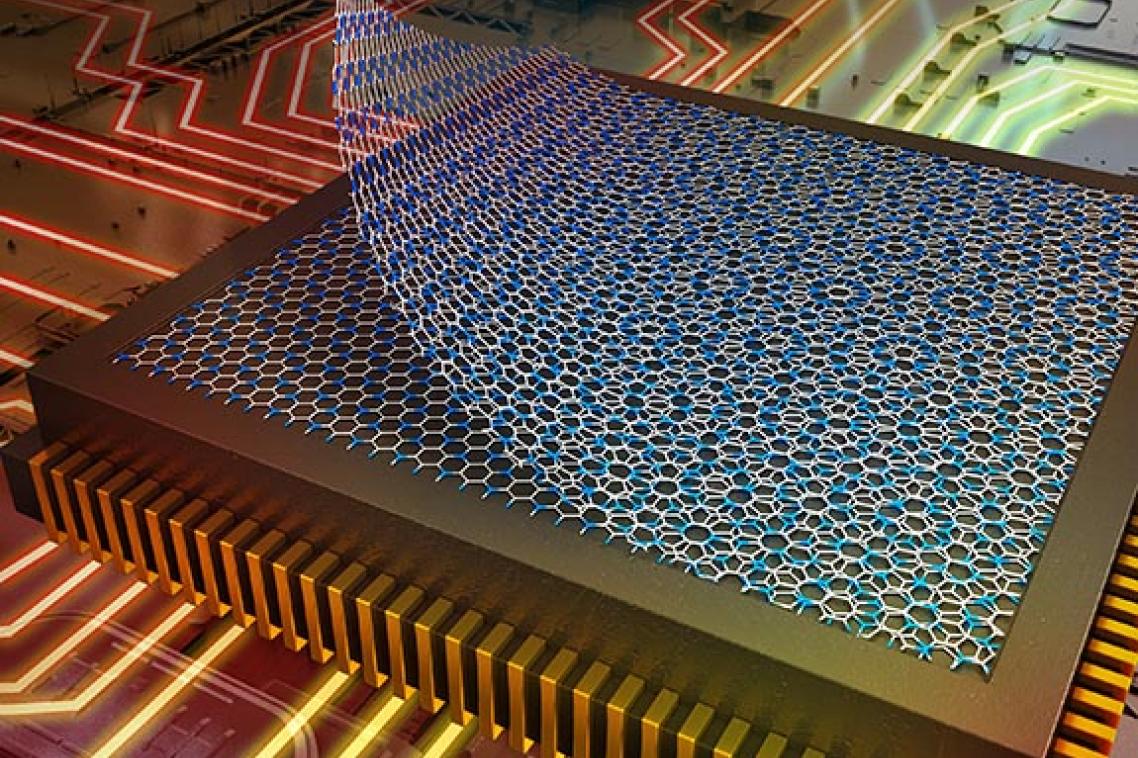Smarter electronics a step closer with nanotech advance

As silicon-based technology reaches its absolute limits, a material engineered by University of Queensland researchers could herald the next generation of electronics with more memory, faster speeds and advanced features.
The carbon-based material could contribute to a growing nanoelectronics market predicted to be worth $162 billion by 2027.
Professor Debra Bernhardt from UQ’s Australian Institute for Bioengineering and Nanotechnology (AIBN) and School of Chemistry and Molecular Biosciences (SCMB) said potential applications included telecommunications, automatic access systems and medical equipment.
‘’Graphene has long been considered a promising material for use in electronics, with its high mechanical strength and electrical and thermal conductivity, but it has limitations,’’ Professor Bernhardt said.
‘’The research team engineered a material with nitrogen atoms included in two layers of honeycomb-patterned graphene, then experimented with shifting and twisting the layers.
‘’This material – C3N bilayers – has the potential to expand the capabilities of nanoscale electronics, which enables more functionality in a smaller area.
‘’Changes in the alignment of the layers can result in the ability to tailor the flow of electricity for various devices, which is not possible with just graphene.’’
Professor Bernhardt said the new structures enabled production of various electronic components that can be combined to produce electronics with requirements and capabilities as diverse as refrigerators and smartwatches.
‘’This is exciting because it combines theoretical predictions and experimental research to develop new devices that could be used in many applications such as computer memory and flexible electronics.‘’
She said the research was a significant step, but more work was needed to more readily produce the material at a reduced cost.
The concept for the material was conceived by AIBN’s Dr Qinghong Yuan, and was developed by a team of researchers at the institute, SCMB and international collaborators, with theoretical calculations by visiting PhD student Wenya Wei.
The research is published in Nature Electronics (DOI: 10.1038/s41928-021-00602-z).
Media: Erik de Wit, e.dewit@uq.edu.au, +61 447 305 979.
Related articles

New data reveals how Australia’s threatened reptiles and frogs are disappearing – and what we have to do

Sunlight-powered breakthrough turns methane into valuable ethylene
Media contact
UQ Communications
communications@uq.edu.au
+61 429 056 139
